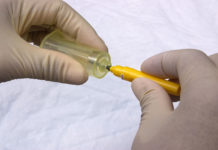
New study on treatment of latent Tuberculosis shows a novel, short therapy is safer and more effective in children and adults than standard therapy
As India battles tuberculosis with an eye on beating the global deadline for its elimination by 5 years, one of the conundrums of the infectious bacterial disease for us is how to stem the spread of the disease.
The reason why it is a particularly difficult question for us is because of the high percentage of latent tuberculosis in the population – asymptomatic individuals who have not yet developed the disease or have started spreading it but have the bacteria. They can develop/spread the disease at any point when the immunity is down.
Now, two studies from the Research-Institute of the McGill University Health Centre (RI-MUHC) have revealed that a shorter treatment is safer and more effective in children and adults compared to the current standard for latent TB.
These findings have been published in the New England Journal of Medicine.
According to WHO, about one-quarter of the world’s population has latent TB, which means people have been infected by TB bacteria but are not (yet) ill with the disease and cannot transmit the disease. People infected with TB bacteria have a 5–15% lifetime risk of falling ill with TB. However, persons with compromised immune systems, such as people living with HIV, malnutrition or diabetes, or people who use tobacco, have a much higher risk of falling ill.
India plans to eliminate TB by 2025, five years ahead of the WHO goal of 2030. India targets to achieve target of testing and treatment for latent TB infection in contacts of bacteriologically-confirmed cases and in individuals at high risk of getting TB disease of 60% cases by 2020.
One of the studies followed 850 children and 6,800 adults with latent TB led by Dr. Dick Menzies, who is a respirologist with the MUHC and a professor of Medicine, Epidemiology and Biostatistics at McGill University.
Researchers compared results among latent TB patients who underwent the current standard treatment of nine months of isoniazid (INH) or a four-month treatment with rifampin. Over 85 percent of children completed rifampin without developing active TB compared to 76 percent of children who completed isoniazid, with two developing active TB. Results were similar in adults. Acceptance and completion of rifampin therapy was much better with significantly fewer serious side effects, particularly drug induced hepatitis. In addition to being a much shorter treatment, the rates of development of active TB were slightly lower with rifampin, indicating that it is at least as effective as the nine-month treatment of INH in preventing TB.
“This four-month therapy is a fundamental game-changer in TB prevention,” says Dr. Menzies. “The four month treatment was as effective in preventing TB, safer and more acceptable. We believe this four month rifampin treatment should replace the nine months on INH for most people who need therapy for latent TB.”
The study involved patients originating from nine different countries of Australia, Benin, Brazil, Canada, Ghana, Guinea, Indonesia, Saudi Arabia and South Korea and was supported by the Canadian Institutes of Health Research.
“We expect this discovery to have a substantial impact on TB, which remains the number one infectious disease killer globally, causing more deaths than AIDS, malaria, diarrhoeal diseases, or other tropical illnesses,” added Dr Menzies.












